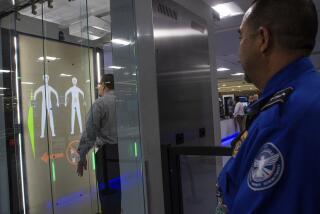Houston Gets 1st Wind-Shear Radar in U.S.
- Share via
HOUSTON — Air traffic controllers switched on the nation’s first wind-shear radar system Thursday, allowing them to give pilots earlier warnings of the dangerous, shifting winds.
The system at Houston Intercontinental Airport is the first of 47 Doppler radars to be installed nationwide at storm-prone airports.
The radar warns controllers instantly when sudden wind shifts occur within 50 miles of the airport. Current wind-shear detection systems monitor only the airport’s immediate area.
The National Transportation Safety Board blamed microbursts--powerful downdrafts of air--for the August, 1985, crash of a Delta jet at Dallas-Ft. Worth International Airport. The crash killed 137 people.
More recently, a USAir jet crashed in a thunderstorm on July 2 in Charlotte, N.C., less than two minutes after pilots were warned of wind shear. Thirty-seven people were killed.
The cause of the crash is still under study and federal investigators have not determined if wind shear was a contributing factor. The Charlotte-Douglas International Airport is 38th on the list to receive the new radar system.
Doppler radar, developed in response to the Delta crash, can detect turbulence that is invisible to conventional radar.
“Controllers can warn approaching aircraft of the condition, and pilots can take appropriate measures to avoid landing at the airport or even approaching the area,” said Scott Wiggins, air traffic management coordinator at Houston Intercontinental.
In 1988, Congress authorized $373 million for the systems.
The main contractor, Raytheon Co. of Sudbury, Mass., said wind shear and gust fronts have been a cause or a factor in 18 airplane crashes and 575 related deaths in the United States since 1970.
More to Read
Sign up for Essential California
The most important California stories and recommendations in your inbox every morning.
You may occasionally receive promotional content from the Los Angeles Times.












